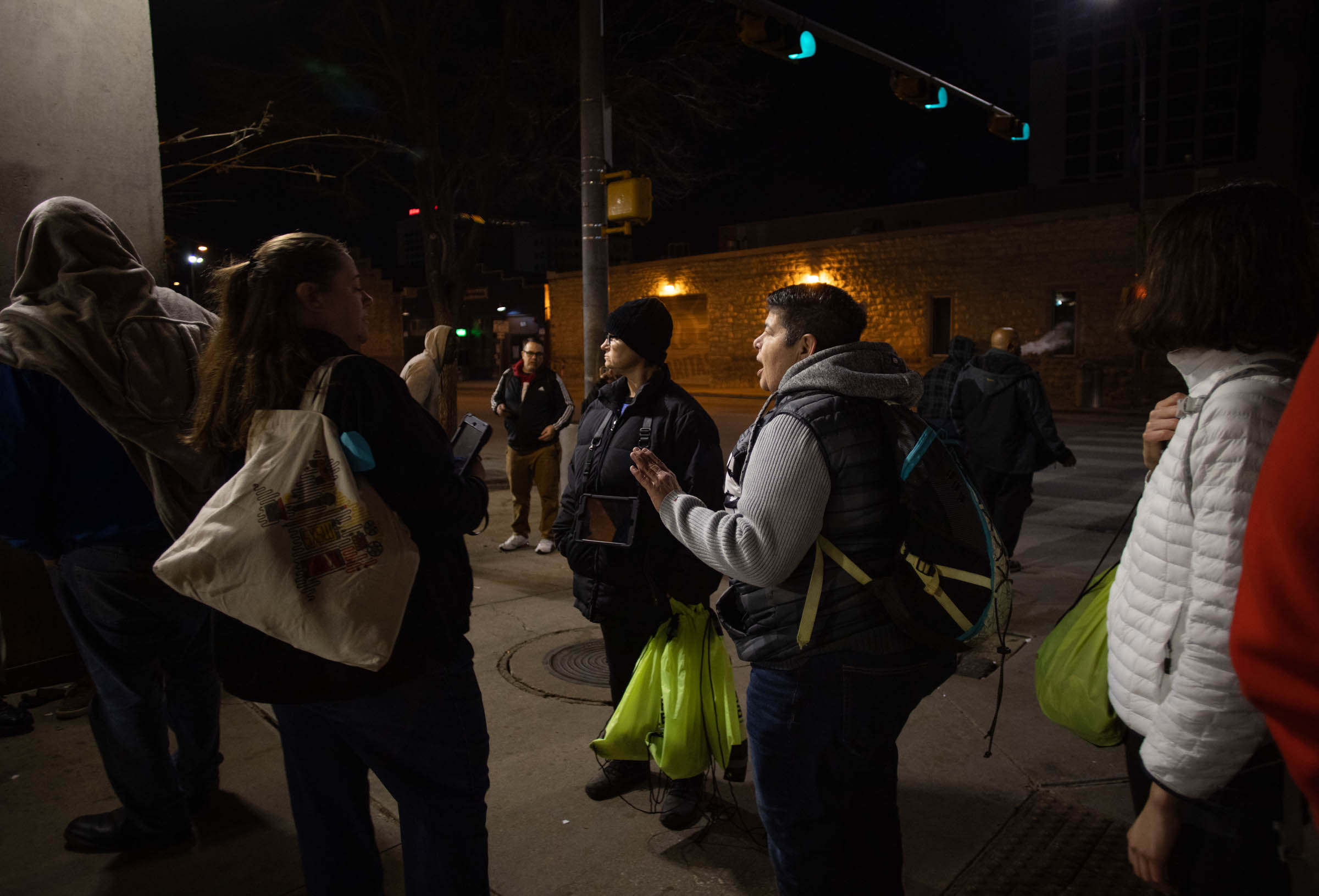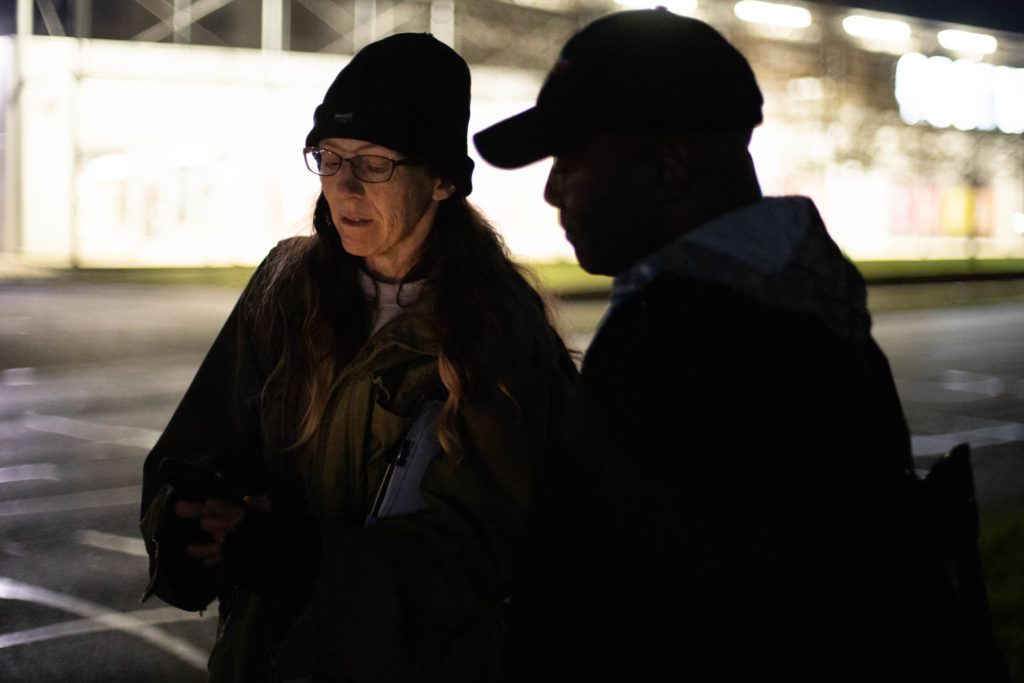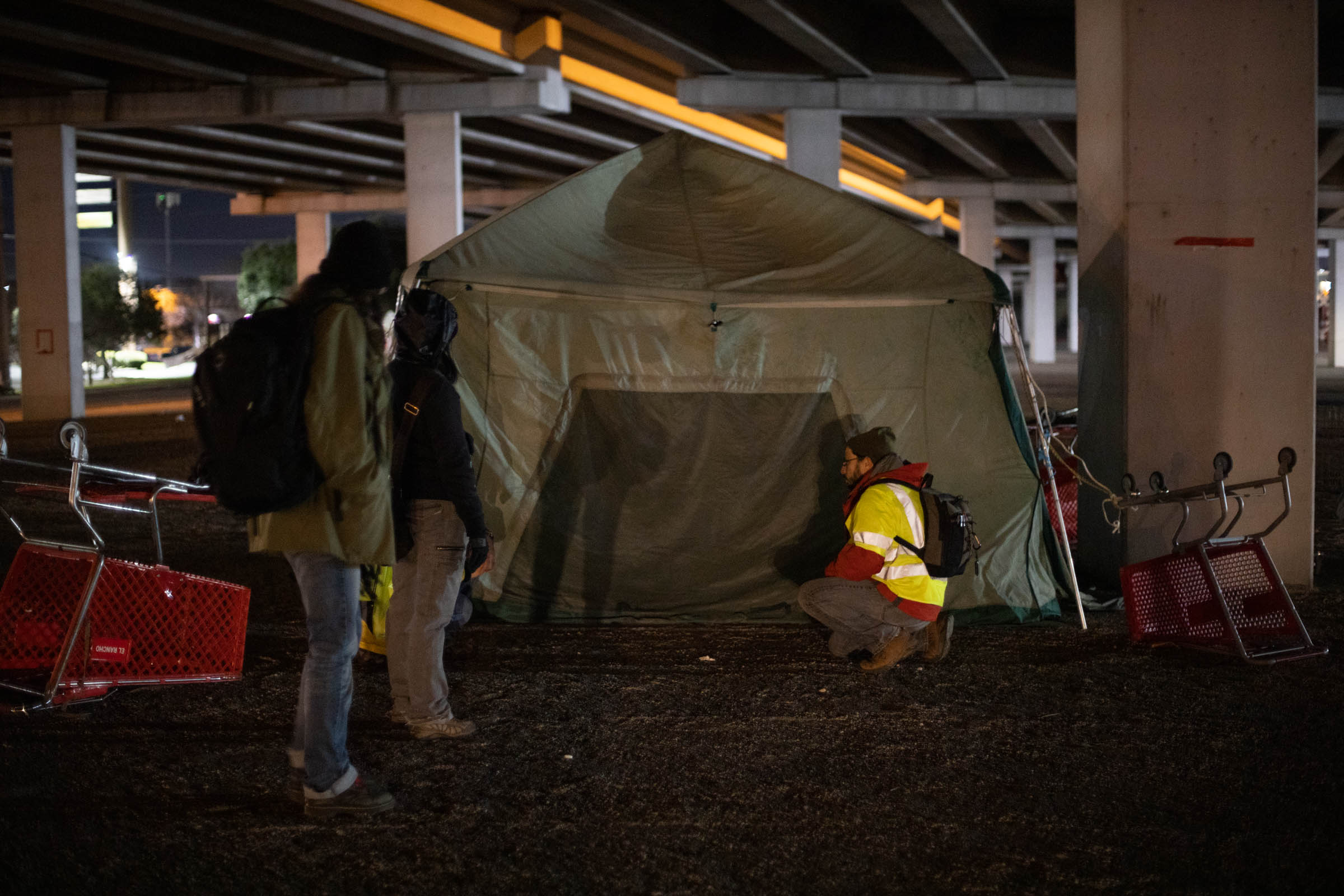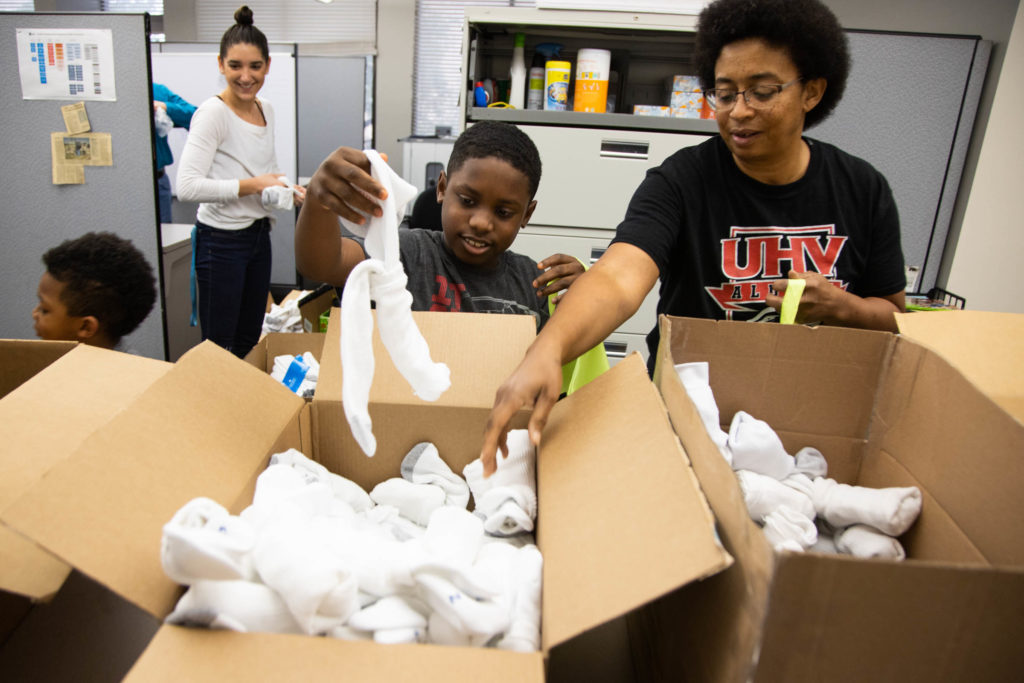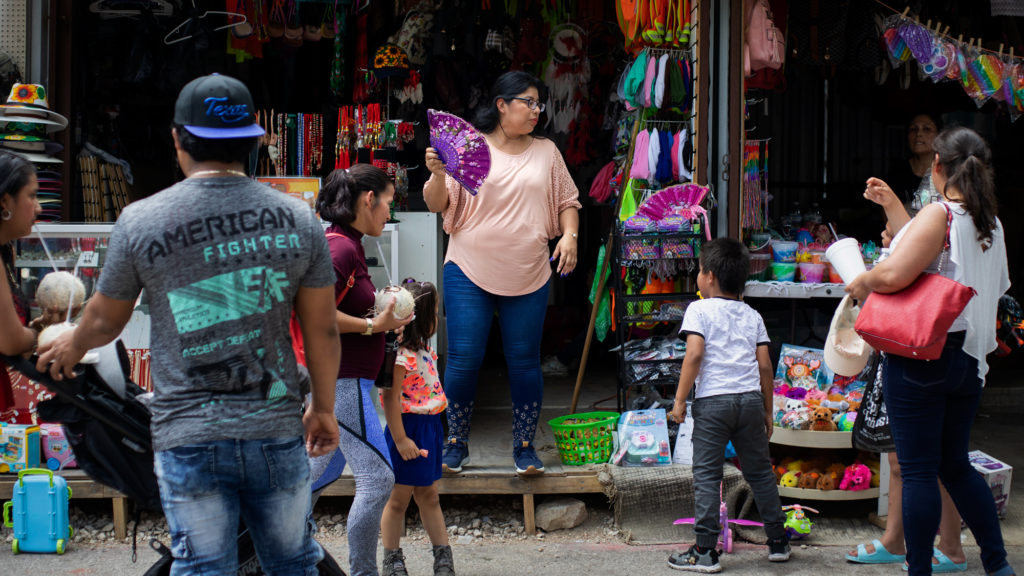By Omar L. Gallaga and Kelly West
It’s 3 a.m., and around 200 volunteers are spilling out of St. Martin’s Lutheran Church in downtown Austin, ready to start this year’s Point in Time Count. “You guys are like heroes for the city,” Austin Mayor Steve Adler says when he addresses the group set to take an annual census of people experiencing homelessness.
Sandra Chavez leads a team to the center of downtown, near the Austin Resource Center for the Homeless. It’s typically a crowded spot to find people, but the streets are nearly empty. “This is the emptiest I’ve ever seen it,” she says.
Chavez is executive director of Austin Harm Reduction Coalition (AHRC), a nonprofit organization that provides testing, medical care, and resources to prevent the spread of diseases among drug users. Many of the people the organization serves are experiencing homelessness.
She’s been involved in the PIT Count for years, since she was first a volunteer at AHRC. Chavez said she feels it provides valuable data not only to Housing and Urban Development, which allocates federal resources to address homelenesses based on the Count, but to local organizations that work together to help the people they serve.
“It’s one night. It’s a snapshot in time,” the team leader said, “but any tools that can help us with what we do in the community are of course helpful.”
The PIT Count itself, which this year took place in Austin during the early morning hours of Saturday, Jan. 25, requires hundreds of volunteers spread out into zones across Travis County. Volunteers, organized by team leaders, seek out unsheltered individuals experiencing homelessness for a questionnaire that documents demographic information and asks questions such as, “Where did you sleep last night (Friday night)?” “When did you first become homeless?” and “Do you have a pet (currently living with you)?”
The Count is done in the late hours of the night when people are less likely to be moving around and during winter when anyone who has access to shelter would be most likely to use it. The shelters also tally the individuals sleeping inside, counted as “sheltered.”
Last year, the group that organizes the PIT Count, Ending Community Homelessness Coalition (ECHO), had about 500 volunteers. The 2019 Austin PIT Count counted 2,255 individuals as homeless, an increase of five percent from 2018’s Count of 2,147.
This year, largely due to a spike in attention and action around homelessness in the Austin area, the size of the volunteer pool has nearly doubled, at about 900 people deployed across Travis County. That means areas of the county, which is 1,023 square miles, can be broken down into smaller sections with teams of about three to nine people in each area. In 2019, there were 45 team sections; for 2020, Nichols said ECHO had divided the county into 75 parts.
“The more people we have, the more thoroughly we can saturate an area,” Nichols said.
The increase in volunteers is partly due to ECHO’s efforts to set a higher goal this year, but also because the city of Austin became a national lightning rod on the issue of homelessness in 2019. After the Austin City Council voted to legalize sleeping, camping, and panhandling in public spaces, public debate erupted on the issue, culminating in an October decision by Texas governor Greg Abbott to force people experiencing homelessness out of encampments located beneath state overpasses.
The PIT Count can also point to other trends, such as geographic shifts among the homeless population. In Austin, for example, Chavez said that she’s seen a trend of more people moving away from the core of downtown and her mobile organization has shifted its operations accordingly to help people in more spread-out areas. That seemed to be reflected in the 2020 count, when Chavez said the numbers downtown she was seeing were definitely lower than the previous year.
Mike Aaron calls out to see if anyone is inside a tent under Highway 183. The volunteers never open tents where people might be sleeping, and try not to disturb people beyond asking if they will speak to them.
Nichols said that the media reports and political moves have increased attention around the PIT Count and housing issues in general, and has made people experiencing homelessness more visible. He said that while the city and local organizations have been supportive of the work ECHO does, the state’s intervention has been less helpful.
“This kind of imposition from the state level, top-down, is people trying to tell us, I guess, how to address the issue of homelessness without providing any resources to go along with that,” Nichols said.
The PIT Count, at its core, is a way for HUD to collect the data to allocate federal resources as the single largest source of funding to combat the problem. The data collected on the PIT Count is usually released by late February and submitted to HUD before April. For 2020, ECHO is collecting data digitally using smartphones for the first time, which was expected to make data collection much faster than when it was done on paper.
Chavez and her team divided the downtown streets into sections and fanned out. Chavez advised them to think about places that are out of sight, away from bright lights, to look for people sleeping. She comes across two people sleeping on benches. One refuses to talk. When that happens, the volunteers write down as much information as they can determine visually to include that person in the count.
The PIT Count data can help provide local leaders with information on what programs are having an impact. Nichols said that one trend he expected to see continue in the 2020 PIT Count was a decrease in youth and veteran homelessness, for instance.
For PIT Count volunteers, spending a night coming into contact with people in Austin experiencing homelessness can be eye-opening.
Nine miles north in northeast Austin, Mike Aaron’s team of volunteers are walking under Highway 183 where a group of tents are set up. Aaron stops at each tent and speaks into the fabric, trying to determine if someone is inside and willing to talk. After a few minutes with no response, he moves on to the next one. “These are the ones that kill me,” Aaron says,”We can’t count them if we can’t see them.”
Aaron is an administrative assistant at Austin’s Aunt Bertha and volunteered as a PIT Count team leader for the second time this year. He said that even an empathetic person can forget how easily some individuals can fall through the cracks and end up on the street.
Mike Aaron, walking with his dog Siddhi, looks at a campsite set up in a ditch in Austin’s Rundberg neighborhood as he scouts in advance of the Point in Time count for areas where people who are experiencing homelessness might be staying.
“There is a psychological separation,” Aaron said, “When you call someone a homeless person, it puts them in a bucket. They become ‘other.’ You forget how fluid our social systems are and how easy it is to fall under the surface. Last year, I really understood how easy it is for anyone to get to a point where they’re experiencing something as isolating and unsupported as homelessness.”
The PIT Count, Nichols said, is one way for people in Austin to feel they are helping address homelessness. “It’s a really large, daunting issue for any individual to look at and think, ‘Oh, how do I do anything about this?’ The PIT Count is one good opportunity for people to do something concrete that will have a positive impact in their community.”

